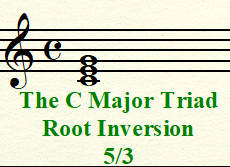
ENTRY 7 Triads * Triads are made up of three notes, once in root position, the bottom note is the root note and the notes above it is a third and a fifth from the root. * In root position, the fifth can either be perfect, augmented or diminished, an augmented fifth, is made up of two major thirds and a diminished fifth, is made up of two minor thirds. The triad of a perfect fifth can either be major or minor, the major triad is consist of a major third at the bottom while a minor triad is made up of a minor third at the bottom. * In a major scale, all of the notes can be used to build triads. Once all of the notes are belonging to the scale the first, fourth and fifth degree, are major triads and the second, third and sixth, degree are minor triads while the seventh degree is a diminished triad. * The notes of a minor scale can also be used to build triads, This time the first, second and fourth are minor triads and the third, fifth and sixth are major triads while th...





